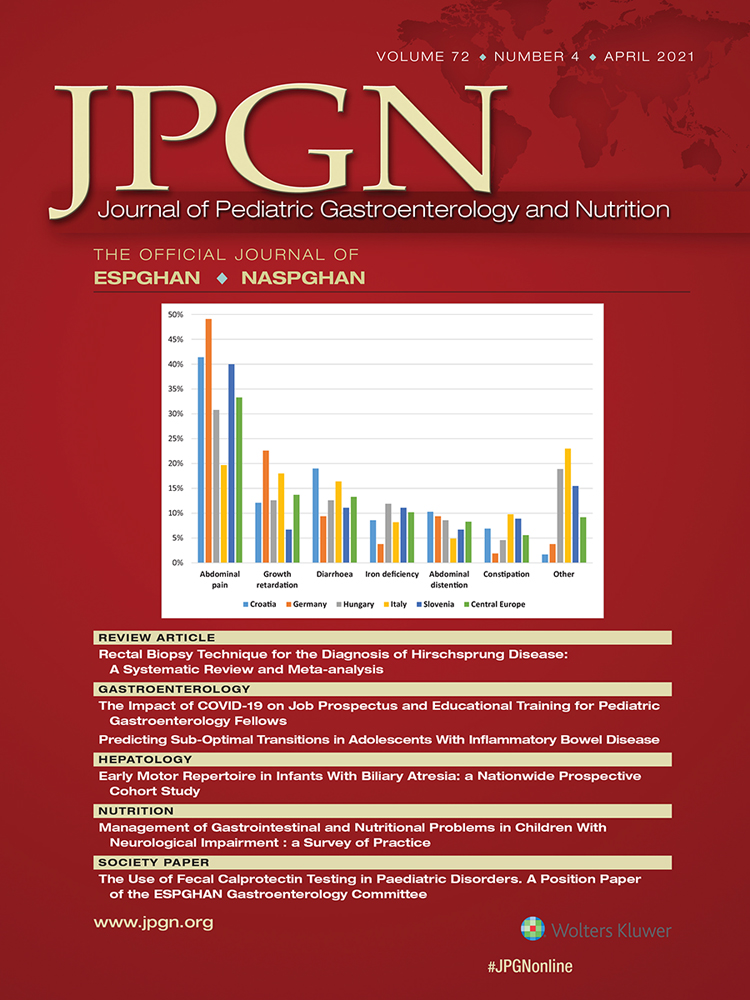Is Celiac Disease Testing Necessary in Functional Abdominal Disorders? A Study in Predominantly Latino Children
The authors report no conflicts of interest.
ABSTRACT
Background: :
Functional abdominal pain disorders (FAPDs) are among the most common causes of consultation in general pediatrics and pediatric gastroenterology. The Rome IV criteria recommend testing for celiac disease (CD) in children with irritable bowel syndrome-diarrhea (IBS-D) and leaves testing in cases of other FAPDs to the practitioner's discretion. These recommendations were based on a single study that showed a 4-fold increase of CD among patients with IBS in Italy. It is unclear if these findings can be extrapolated to other populations. Understanding whether those results are reproducible in areas with different racial/ethnic backgrounds can optimize patient care.
Aim:
The aim of the study was to assess the prevalence of CD in a sample of children consulting for FAPDs to a tertiary care center in Miami.
Methods:
The charts of all pediatric patients consulting for FAPDs from January 2016 to November 2019 at the University of Miami were reviewed. Demographics, diagnosis, and CD testing for each child were analyzed.
Results:
One hundred eighty-one children with FAPDs and celiac testing were seen. Mean age of 12.89 years, girls 61.34%. 84 (46.40%) had a diagnosis of IBS and 97 (53.59%) had a diagnosis of other FAPD. One of 181 children with FAPDs (0/84 with IBS and 1/97 with other FAPDs) had positive CD serological testing and EGD confirmation.
Conclusions:
Our study suggests that the prevalence of CD among children with FAPDs is similar to the community prevalence. This data questions the benefit of testing all children FAPDS (including IBS) for CD. Studies with larger sample size and various racial/ethnic makeup should be done to confirm our findings.




